

2417 30 34 Talent Acquisition With Emerging Tech Savita Hortikar, Thoughtworks, India Impact Of The New Labour Law On Indian Employers - Sheetal A. Iswalkar, Fullife Healthcare Pvt. Ltd. Recruitment 4.0 - Yogita Tulsiani, iXceed Solutions 5 Ways HR Tech Can Improve Your Employee Experience - Chayan Mukhopadhyay, Qandle SEPTEMBER 2022 • Vol.4 • No. 09 FROM THE GREAT RESIGNATION TO THE GREAT RETENTION - Neetu Wahi Matta, Head, Leadership Hiring and Integration, Max Life Insurance (ISSN 2564-2049)
From The Great Resignation To The Great Retention
How to prevent employees from walking away

- Neetu Wahi Matta, Head, Leadership Hiring and Integration, Max Life Insurance
Gaurav Bhagat,
- Utsav Bhattacharjee,
COO,
Training And Skilling Of Employees:
Employee training and skilling are critical to organizations’ continuity plans
- Lakshmi Mittra, VP & Head, Clover Academy
Inclusiveness In Today's Workplace Steps organizations can take to establish a diverse culture
- Krishna Kumar, Co-Founder & CEO, Isthara Parks

07 On the Cover INDEX HCM Excellence (APAC & Middle East) SEPTEMBER 2022 Vol.02 No.09 (ISSN 2564-2049)
Articles 32
Top 5 Benefits
37
14 CHRO Corner Exclusive Interview With Nikhil Raj, Head, Human Resources, Equiniti India 20 Role Of Empathy And Coordination In Healthy Workplace Competition Competition can help boost physiological and psychological activation -
Founder, Gaurav Bhagat Academy 27 5 Ways Gig Economy And Technological Advancements Have Altered How People Look At Work Future of work will be determined by sophisticated, evolving and competitive technological forces
Co-Founder and
PickMyWork
TOP PICKS
Talent Acquisition With Emerging Tech
How emerging tech can impact talent acquisition strategy and processes
- Savita Hortikar, Head of Talent Acquisition, Thoughtworks, India
INDEX
5 Ways HR Tech Can Improve Your Employee Experience


HR technology is becoming integral to employee retention
- Chayan Mukhopadhyay, Co-Founder and CEO, Qandle
Impact Of The New Labour Law On Indian Employers
What employers need to know about the new four proposed rules


- Sheetal A. Iswalkar, Head, HR & Admin, Fullife Healthcare Pvt. Ltd.
Recruitment 4.0
HR leaders adopt new hiring policies for Indian IT industry
- Yogita Tulsiani, Co-Founder, iXceed Solutions
17 24 30 34
HCM Excellence (APAC & Middle East) - Bi-monthly Interactive Learning Journal


Stay up to date on labor laws and compliant on HCM regulations in the Asia Pacific (APAC) and Middle East regions. This bimonthly publication offers relevant topics that help educate and inform readers on the latest HR developments, regulations, or practices in these areas that may affect your business.
Human Capital Management Webcasts for Certification Credit
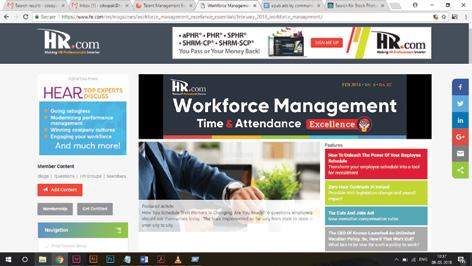

HR.com offers various informative webcasts on a variety of topics around human capital management. Webcasts are available live online with a downloadable podcast and a copy of the slides (PDF) available before and after each webcast. Earn all of the required recertification credits for aPHR, PHR, SPHR, GPHR, and SHRM Certifications. HR.com’s one-hour webcasts, excluding demo webcasts, in every HR specialty are pre-approved for HRCI and SHRM credit.
HR Community Networking
Join our community members with a similar interest in your specialty of HR. Share content and download research reports, blogs, and articles, network, and “follow” peers and have them “follow” you in a social network platform to communicate regularly and stay on top of the latest updates. These well-established communities are an invaluable resource for any HR professional or manager.
How are our HCM Products and Services helping to make you smarter? Use these invaluable HCM Excellence (APAC & Middle East) resources today! For more information phone: 1.877.472.6648 | email: sales@hr.com | www.hr.com Driving and inspiring HR Excellence in the Asia Pacific and the Middle East regions.
Our
Editorial Purpose
Excellence Publications
Debbie McGrath
HR.com
Dawn Jeffers VP, Sales

Sue Kelley
Director (Product, Marketing, and Research)
Babitha Balakrishnan and Deepa Damodaran Excellence Publications Managers and Editors
Deepak S
Senior - Design and Layout
HCM Excellence (APAC & Middle East) Team
Babitha Balakrishnan and Deepa Damodaran Editors
Chinnavel, Nataraj Ramesh and Arun Kumar R Design and Layout (Digital Magazine)
Chandra Shekar and Vibha Kini Magazine (Online Version)
Submissions & Correspondence
Please
ePubEditors@hr.com
Debbie Mcgrath Publisher, HR.com
What Makes
Babitha Balakrishnan | Deepa Damodaran Editors, HCM Excellence (APAC & Middle East)


That Entices Employees To
The pandemic disrupted the world of work and changed the employeremployee dynamics beyond anyone’s anticipation. Priorities changed with well-being and happiness overtaking pay and perks. Organizations started re-evaluating their working arrangements and investing in areas that drive engagement. Continuous learning opportunities are becoming the norm. In brief, organizations are moving toward finding out what unchains an employee’s potential, enabling them to be healthy and productive, regardless of where they work. With all these changes, can organizations turn attrition into attraction in the coming years?.
The September issue of HCM Excellence (APAC & Middle East) includes articles that focus on expert strategies and tips to help you better manage change in the workplace.
There is a sense of fatigue that has crept into today’s organizations, with people looking to move forward in their careers instead of doing the same thing daily. What can companies do to prevent employees from walking away? Max Life Insurance’s Neetu Wahi Matta in her article, From The Great Resignation To The Great Retention, sheds light on this topic.
In today’s world, employees love to be part of a company that embraces the latest tools and technologies and promotes inclusiveness. Check out how HR technology is becoming integral to employee experience and employee
retention in Chayan Mukhopadhyay’s (Qandle) article, 5 Ways HR Tech Can Improve Your Employee Experience.
In an exclusive interview with HR.com, Equiniti India's HR Head, Nikhil Raj talks about his HR journey and shares some valuable insights on the future of HR.
PickMyWork’s Utsav Bhattacharjee in his article, 5 Ways Gig Economy And Technological Advancements Have Altered How People Look At Work, discusses how the gig economy and technological advancements have changed people’s perceptions of work.
Impact Of The New Labour Law On Indian Employers by Sheetal A. Iswalkar (Fullife Healthcare Pvt. Ltd) outlines how the new labor codes are likely to affect work life in terms of work hours and leaves.
In brief, this edition of HCM Excellence (APAC & Middle East) is all about strategies to create a future-ready workforce and tips to drive your business forward successfully.
We hope you enjoy reading all the informative articles in this edition and get back to us with your valuable feedback!
Happy Reading!
Copyright
Disclaimer: The views, information, or opinions expressed in the Excellence ePublications are solely those of the authors and do not necessarily represent those of HR.com and its employees. Under no circumstances shall HR.com or its partners or affiliates be responsible or liable for any indirect or incidental damages arising out of these opinions and content.
EDITOR’S NOTE
And get this magazine delivered to your inbox every month OR For Advertising Opportunities, email: sales@hr.com
© 2022 HR.com. No part of this publication may be reproduced or transmitted in any form without written permission from the publisher. Quotations must be credited.
mission is to promote personal and professional development based on constructive values, sound ethics, and timeless principles.
CEO,
- Publisher
send any correspondence, articles, letters to the editor, and requests to reprint, republish, or excerpt articles to
For customer service, or information on products and services, call 1-877-472-6648 HCM Excellence (APAC & Middle East) Excellence (ISSN 2564-2049) is published monthly by HR.com Limited, 56 Malone Road, Jacksons Point, Ontario L0E 1L0 Website Address: www.hr.com
A Good Workplace
Stay? Subscribe now for $99 / year Become a Member Today to get it FREE! SIGN UP Write to the Editor at ePubEditors@hr.com
In a world of unparalleled challenges (global pandemic, racial injustice, politi cal rivalry, digital 4.0, emotional malaise), uncertainty reigns. Finding opportu nity in this context requires harnessing uncertainty and harnessing starts with reliable, valid, timely, and useful information. The Excellence publications are a superb source of such information. The authors provide insights with impact that will guide thought and action.
Dave Ulrich
Rensis Likert Professor, Ross School of Business, University of Michigan Partner, The RBL Group

Excellence publications are my ‘go-to’ resource for contemporary and action able information to improve leadership, engagement, results, and retention.
Each edition offers rich and diverse perspectives for improving the employee experience and the workplace in general.



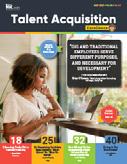



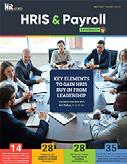
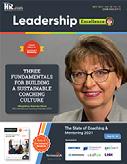
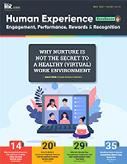
Julie Winkle Giulioni
Author, Virtual /Live Keynote Presenter, Inc.’s Top 100 Leadership Speakers

I regularly read and contribute to Leadership Excellence and Talent Manage ment Excellence. I use many of the articles I read to augment my own presen tations and I often share the articles with my clients. They are always quick, right on target for the latest issues in my field, and appreciated by my clients.
If you want to stay up to date on the latest HR trends, choose a few of the dif ferent issues from the Excellence series of publications.
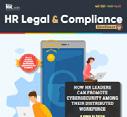


Dr. Beverly Kaye
CEO, BevKaye&Co.

Submit Your ArticlesHCM Excellence (APAC & Middle East) presented by HR.com September 2022
We’re eager to hear your feedback on our magazines. Let us know your thoughts at ePubEditors@hr.com WHY EXCELLENCE PUBLICATIONS?
From The Great Resignation To The Great Retention
How to prevent employees from walking away
By Neetu Wahi Matta, Max Life Insurance
All organizations, from thriving start-ups to large corporations, are deeply concerned about the attrition that they are facing. While we continue to get adjusted to the new normal, a new study, 'The Great X' by Michael Page found that 86% of employees in India plan to resign within the next six months.
The Great Resignation is a term we have seen a lot on LinkedIn and other platforms in the last few months, but what does that mean? Anthony Klotz, an organizational psychologist at Texas A&M University, coined the term: The Great Resignation, to describe the wave of people quitting their jobs as a result of the ongoing pandemic.

Submit Your ArticlesHCM Excellence (APAC & Middle East) presented by HR.com September 2022 7
COVER ARTICLE
From The Great Resignation To The Great Retention
There will be a high attrition rate in almost every industry, led by manufacturing, travel, and retail followed by FMCG, technology, and insurance among the highest ever. As a result of the Covid-19 pandemic in India, experts predict that the Great Resignation will
continue in 2022, and in the next 6 months, 92% to 84% in the above-mentioned industries plan to resign.
Even more surprising is that the great resignation era in India will be led by those who have been in their current jobs for less than two years.
While 86% of the participants in The Great X report will be looking for new career prospects in the next 6 months, managers will top the charts at 89%. Employees in India are willing to accept lower compensation or slow promotions to improve their work-life balance and overall happiness and are not ready to compromise this for a better pay package.

The trend is the same, irrespective of the level of experience or age, the report predicts that this trend will continue. Needless to say, to deal with this growing trend, organizations must prepare for
“a significant talent migration event,” which is not far away as some organizations are already experiencing it.
Employees have left in large numbers over the last two years, and many believe this is because of the same factor. According to the same report, only 11% of employees who have resigned or plan to resign cite Covid regulations as the reason for their departure. The root causes of the rising number of employees quitting their jobs are career advancement or promotion or change in career or industry, followed by dissatisfaction with compensation.
Submit Your ArticlesHCM Excellence (APAC & Middle East) presented by HR.com September 2022 8
From The Great Resignation To The Great Retention
Most people leave their jobs, namely about 48%, because they want to advance in their careers. Employee well-being and happiness have overtaken pay and perks as the most important considerations for workers. Organizational work cultures (hybrid, home-based, etc.) have recently been the subject of much debate.
Are the Employees Just Walking Away?
According to Ian Cook’s Harvard Business Review research of the Great Resignation, mid-level employees have been driving the spike in resignations. So why is this the case?
● After months of heavy workloads, hiring freezes, and other pressures, employees hit a breaking point. About 57% of employees cited their workload has increased post-Covid and 52% say their stress levels
● Employers have realized that hiring people with minimal experience, onboarding them, and training them remotely is riskier and as a result mid-career workers were in high demand
The pandemic has prompted people to rethink the role of work in their lives because of the large number of deaths and serious illnesses. Some workers may have felt motivated to leave their jobs due to this shift in perspective. Particularly, those who became overburdened with work that interfered with their ability to provide for their families. Women and younger age groups have been more affected than older ones. Frontline workers, parents, caregivers, and organizational leaders have all been affected by burnout.
As a result, there will always be turnover. Approximately one-third of working women are considering quitting their jobs, making a career change, or reducing their hours, according to the ‘Women in the Workplace’ report from 2021.
There is a tipping point in every aspect of culture, and when it is reached, an explosion occurs. The interesting piece and in a big way a relief for HR is that people are not only leaving their jobs because they are bored or dissatisfied with what they are doing, but
there are several other reasons also. It is becoming increasingly difficult for employers and employees both to find common ground regarding the work environment they both desire, expect and can thrive in.
The Great Retention
Many job seekers already have and are reevaluating their priorities due to the Covid-19 pandemic, which was an unprecedented event. People are open to and are relocating to new fields and roles more aligned with their values and aspirations. Employers prefer to deal with folks who want to help grow our business rather than those who feel stifled or are unable to do so.
As a result, these conventional queries of “Why do you want to work with us?” and the likes of it, now hold more weight than ever when you are interviewing a potential employee for a role.
There is a sense of fatigue, current jobs are stressful, the market is open, people are shopping for multiple offers and they want to move forward in their careers instead of doing the same thing daily. So, what can companies do to survive The Great Resignation and have an edge over the others in keeping their employees on board?
Loyalty and Rewards
Keeping employees in 2022 does not mean only paying them well, as far as fixed pay is concerned, it is the overall package that will keep them away from looking elsewhere for another role. Implement an attractive bonus structure for performance, loyalty, innovation, etc., in addition to improving your company’s current compensation package.
Consider providing competitive time-bound financial assistance for higher education, such as assisting with student loan debt or helping the recipient save money to use as a down payment for a home or a vehicle purchase. Max Life has a Scholars policy for employees, who want to pursue higher education. A better flexible benefits structure that helps them save tax. The opportunity to correct any pay inequalities occurring due to gender, race, etc., has to be provided when compensation is reset.
Submit Your ArticlesHCM Excellence (APAC & Middle East) presented by HR.com September 2022 9
Activating the alumni network, as some of the former employees may be interested in returning to the workforce, evaluating the proposition to initiate a long-term relationship with them, offering paid time off for employees, if they or their families get exposed to Covid-19, are some of the ideas that can win the loyalty of employees.
Understand Their Word and Act on it
“Listening Posts” or consulting with employees will help to get a sense of their general well-being and attitude towards productivity and rewards expectations. This data can come in handy to develop your company’s compensation plans and should be used to focus on the areas, where they most need assistance.
Listening to the employees will not only allow you to provide better benefits and compensation plans, but will also allow you to improve the quality of your workplace. Having said that, listening needs to be followed by action and updates. Organizations tend to conduct employee surveys, however, no or little action is initiated. When you close the loop and act on the feedback from the employees, they know you care.
For example, do employees prefer a hybrid environment, or coming to the office, or measuring employees on the outcomes or the number of times they come to work in a week? For example, Nestle followed a process of evaluating each job role to see if the role is required to be in the office or can work remotely. If in the office, then how many days in a week?
Allow your employees to skip the tedious process of clocking in and out of the office. When formulating strategies, keep in mind what employees have to say and what you can do to meet their varying requirements. Be sure to give employees a voice in the decision-making process.
Room to Grow and Thrive
Imagine for a moment that your best employees have just informed you that they are resigning. Probably, the first thought will be the retention target in the goal sheet and how will you inform your supervisor. But, would you know how to keep them from leaving?
Consider the importance of employee retention right from when you are hiring the candidate or doing the performance reviews, and ask about their ideal job. Thus, before people start packing up, consider how you can fill these kinds of jobs for them.

In the last few months, almost all the organizations have conducted retention interviews to find out what will help people to stay with their current company. People often leave jobs because they do not feel that their abilities are being put to good use and they may have become mere executors or order followers. What do you do? How do you keep your employees happy and productive? The simple answer is to increase the opportunities based on the employees' aspirations and provide them with the chance to broaden their skill set.
This could be in the form of training, cross-functional projects, mentoring, or job rotation. Sharpening the current skills and learning new ones are significant for employees and a clear expectation from employers.
Hybrid and Remote-friendly Is Mandatory to Be “A Cool Place to Work”
Even before the emergence of the pandemic, a majority of knowledge workers expressed a desire to work from home and were willing to give up their jobs to do so. While some organizations had remote working as a part of the culture, a lot were still pondering on it and would have taken years to make the transition.
From The Great Resignation To The Great Retention
Submit Your ArticlesHCM Excellence (APAC & Middle East) presented by HR.com September 2022 10
The pandemic expedited the same and all were working remotely in a matter of few days. But as things start to go back to normal, we realize this is a difficult pill to take. Moreover, not all businesses can afford to have a remote or blended workforce. Some businesses must have face-to-face interactions, however, let us face it: not all need to.
While I was working with Sapient Consulting (2008-2014), one of my colleagues was based out of South Korea for 2 years and used to visit the Gurgaon office twice a year, which was a brave decision as there was no office in South Korea and rest of the team was in Gurgaon. We all have realized that many things that we thought were impossible turned out to be feasible. Since then, nothing has been the same, including how we operate together.
So, let’s take some time to reflect on this and management should ponder this before making any decisions against a hybrid or remote workplace.
Are We Panicking?
Many recruiters and HR people tend to panic about hiring under the pressure to fill many open positions in a short period. It would be wrong to say, that I have not or that some of my colleagues have not, but that is not something that we give into. We do not want to have a case where competencies might precede attributes, such as personality or cultural fit.
A bad hire is likely to cost the organization financially and culturally in the long term. Hence, while finalizing the candidate, make sure you think about:
1 Candidate’s values are in alignment with that of the organization’s
2. Apart from the designation and compensation, what motivates the candidate to work with the organization
3 Candidate’s ability to grow with the organization
The Great Resignation didn’t just happen as a result of the pandemic. Business leaders in a variety of fields will benefit from identifying the specific causes of employee turnover and devising strategies to combat it. That is why futuristic companies need to think of
how to enable their employees to work from home or telecommute to remain competitive in the workforce. Benefits tailored to employees’ evolving needs will be a key differentiator for companies competing for top talent. Employers, who demonstrate a long-term focus on employee development, and cross-functional skills by offering training and other opportunities will gain greater loyalty and reputation with prospective employees. The factors that sparked the Great Resignation were not one-offs; they are here to stay.
Remote is the preference of the employees, however, this also needs to be tread carefully. Clearly defined responsibilities, outcome-based performance reviews, and employee-friendly policies will lead the way for remote workers. Without them, we are putting remote teams at a significant disadvantage.
This is why it is critical to invest in a culture that fosters trust and ownership in the future. Async work is something that GE Capital (now Genpact) has been following for years now. It allows employees to work when it is most convenient for them, rather than adhering to a strict “log in/log off” timetable along with regular check-ins and reporting. It is all based on the assumption that you have a team of trustworthy, highly devoted, and performance-oriented superstars.
Neetu Wahi Matta, ACC-ICF, is Head, Leadership Hiring and Integration, at Max Life Insurance. Would you like to comment?
 From The Great Resignation To The Great Retention
From The Great Resignation To The Great Retention
Submit Your ArticlesHCM Excellence (APAC & Middle East) presented by HR.com September 2022 11










 Marshall Goldsmith Executive Coach
Ten
Author/Editor
Courtney McMahon Vice President of People Analytics Colgate Palmolive
Beverly Troxtell Head of HR Change Management & HR Evolution PayPal
Linda Cai Head of Talent Development LinkedIn
Melanie Tinto CHRO Wex
Nikita Steals Head of Talent Acquisition Capital One
Dave Sachs Senior Director People Analytics and Data Science Northwestern Mutual
Ryan McCrea Head of Learning & Development Atlassian
Marshall Goldsmith Executive Coach
Ten
Author/Editor
Courtney McMahon Vice President of People Analytics Colgate Palmolive
Beverly Troxtell Head of HR Change Management & HR Evolution PayPal
Linda Cai Head of Talent Development LinkedIn
Melanie Tinto CHRO Wex
Nikita Steals Head of Talent Acquisition Capital One
Dave Sachs Senior Director People Analytics and Data Science Northwestern Mutual
Ryan McCrea Head of Learning & Development Atlassian
Submit Your ArticlesHCM Excellence (APAC & Middle East) presented by HR.com September 2022 12 2022 SPEAKERS Inspiring keynotes · Educational sessions, panels and workshops for industry thought leaders · Intimate round table discussions with hot topics ·1 on 1 meetings with partners and key suppliers · Guided market tours · Product demos Industry leaders will share their experience, vision, and innovations over three packed days in Nashville. Join them at an event filled with fun, parties, networking and collaboration! October 5 - 7, 2022 Nashville, Tennessee SAVE UP TO $750 Get your conference pass for as low as $300 REGISTER NOW
Top
Business Thinker
https://www.hr.com/InspireHR-attend hr.com/InspireHR-attend




















Submit Your ArticlesHCM Excellence (APAC & Middle East) presented by HR.com September 2022 13 SAVE UP TO $750 Get your conference pass for as low as $300 REGISTER NOW SPONSORS & EXHIBITORS IMAGINE THE POTENTIAL OF HR AND YOU! https://www.hr.com/InspireHR-attend hr.com/InspireHR-attend 2022 TOPICS LEADERSHIP & BEING THE BEST LEADER POSSIBLE EMPLOYEE EXPERIENCE & WELLBEING TALENT MANGEMENT SKILL DEVELOPMENT DIGITAL TRANSFORMATION TALENT ACQUISITION Bring your team! Group pricing is available. Contact CorporateEducation@hr.com for more information.
Inspiring the Next Generation of HR Leaders CHRO CORNER
Where do HR leaders draw inspiration from? What are their worst nightmares? How did they stand the test of the changing times?
In this segment, we will trace your journey to the top.
This is your story - a story that is made of extraordinary accomplishments, methods that helped you overcome adversity, innovative programs that you led, and fundamental changes that you brought in. It's your chance to inspire the next generation of leaders.
Nikhil Raj heads the Human Resources department at Equiniti India. With over 20 years of quality experience helming the HR function in leading companies, Nikhil has always managed to blend the best qualities of a keen motivator. In his current role, he is responsible for developing and driving the entire spectrum of the HR function, ranging from people process, HR automation, policy and culture, compensation and benefits strategy, to employee engagement and change management, HRBP, talent development and succession planning strategy, as well as the overall HR operations for Equiniti India.
In an exclusive interview with HR.com, Nikhil shares his HR journey with the readers, his learnings over the years and also touches upon how HR will undergo changes in the future.
Exclusive Interview With Nikhil Raj, Head, Human Resources, Equiniti India

Excerpts from the interview:
Q
What has your HR journey been like and what influenced you the most to have a positive impact on your career?
Nikhil: Well, looking back, I would say my HR journey has been an adventurous roller-coaster ride, with the first few years being given to understanding the practical aspect of the department and then moving around various areas of HR to specialize in the SME sector, to finally becoming an advisor and partner to the leadership on critical employee facets. Though I would add that the journey is far from over!
Submit Your ArticlesHCM Excellence (APAC & Middle East) presented by HR.com September 2022 14
CHRO Corner
What were your challenges during the early days of your career? What are those today?
Nikhil: The challenge initially was that there were lim ited opportunities as there were fewer companies. The situation was further compounded by the job market at the turn of the 21st century when there was a recession. The struggle then was to learn the skills and enhance competency while simultaneously creating differentia tors between colleagues in the office and as a candi date in the market.
Over the years, the field of HR itself has undergone a huge change and one has to keep abreast of the latest developments. HR is not just a hiring depart ment for a company, it acts as a business partner that is equally invested in the success of an organization as any other department. Even within HR, there are specializations aplenty – one can be an HR operations person, HR technocrat, consultant, SME, or lead center of excellence, to name a few.
QHow do you see workplace culture evolving over the years?
Nikhil: There has been a sea-change in the workplace culture, which has become more informal and less hierarchical owing to a redesign of the office space itself -- from being a modest “table & chair” physical work environment to plush infrastructure, with ergo nomic workspaces to cater to formal and informal meeting places, from a manual process to digital/
ERP HR software, from competence-based training to culture building exercise, from manager develop ment programs to leadership development program, tenure-based promotion to competence/skill-based role enhancements, to name a few.

Above all, I see a well-informed workforce, having an overall understanding of the process, business, com pany and Industry of which they are part.
QCan you share the top three learnings from the challenges you faced?
Nikhil: Adverse situations have always helped me to see possibilities beyond the “usual options” and devel op what we have started calling out-of-the-box think ing.
Whenever I am confronted with a seemingly insur mountable task, I take a pause and ask myself; how we can do this faster, better, with the highest quality and within the given timeline.
For instance, during the Covid-19 induced lockdown, we found various means to reach out to our employ ees and help them with the basics, such as food, medications, doctor, insurance and hospital, leaves, financial help, etc. This situation has clearly helped us to differentiate between a manager and “a true leader”. It helped me understand the real character of humans, such as commitment, trust, empathy and above all, care.
Submit Your ArticlesHCM Excellence (APAC & Middle East) presented by HR.com September 2022 15
Q
CHRO Corner
Name: Nikhil Raj B
Designation: Director - HR
Company: Equiniti India
Total number of employees: 1,300
When did you join the current company? Dec. 2019
Total experience in HR: 20 yrs
Hobbies: Reading, watching biopics
What book are you reading currently? ‘Influence without Authority’ by David Bradford & Allan Cohen
The second agenda is around Diversity & Inclusion. We developed a workforce that comprised of 40% women. This initiative was applauded across the geography of the EQ group.
Thirdly, we have built theme-based, cross-functional teams that drive our CSR, sports and cultural events across the organization. This helped us to empower teams across the organization and create bonding and a sense of belonging, especially post Covid.
As we have a culture of a consultative approach, across the mid and senior leadership team, it encour ages alternative opinions in order to build a strong and inclusive organization.
QWhat are some major changes you see affecting HR within the next few years?
Nikhil: I draw my inspiration from my parents, who are independent in all aspects of life and keep motivating me to do better. In addition, I have been fortunate to work with senior leaders who have always encouraged me to explore different perspectives of life, and not just work.
Where do you draw the line when it comes to work-life balance?
Nikhil: To be frank, I am still learning to draw a line between personal and professional life. I guess there is still a long way to go. However, I spend quality time with family, especially during festivals, as it creates memories for life.
What fundamental change(s) (in terms of culture) have you brought into your company?
Nikhil: Fundamentally, we worked towards employee empowerment and open communication. Having this theme, we initiated virtual town hall meetings with our local and global leadership teams. This helped em ployees to voice their opinions on multiple platforms. Further, the HR team reached out to delivery teams on a periodic basis to understand their views and ad dressed concerns quite transparently.
Nikhil: The number one challenge for any organization these days is employee retention and minimizing at trition. There’s a war for talent out there and until an organization focuses on high-performing employees, matches their career and personal aspirations, and provides growth within and outside the role, it is going to be a losing battle. In addition, in an age where social media is king, social engagement becomes imperative as employees, their friends and acquaintances have increasingly aligned themselves to social media and social gratification has become the norm.
Given the hectic work schedules, physical and mental well-being, especially in the aftermath of the pan demic, has assumed greater importance. It is impera tive that the HR team provides various opportunities, such as games, sports and social events on a periodic basis and have counselors to attend to the employees’ mental needs.
Would you like to comment?
QWhere do you draw inspiration from? What do you have to say to those who are still struggling to find a place in the boardroom?
Submit Your ArticlesHCM Excellence (APAC & Middle East) presented by HR.com September 2022 16
Q
Q
Talent Acquisition With Emerging Tech
How emerging tech can impact talent acquisition strategy and processes
By Savita Hortikar, Thoughtworks, India
Digitalization has disrupted HR in a big way. There are entire seismic shifts in the way organizations attract, hire, retain and develop top talent. Candidates are taking advantage of the digital age that is characterized by easy, immediate access to (sometimes) overwhelming information. They seem to know organizations long before they even decide to take an interview.
Additionally, India’s booming economy is flooding candidates with enviable job opportunities in new age technologies like AI, data sciences and the good old developer roles. The new traits of prospective IT employees are a yearning for learning and consistent and proactive upskilling.
Another feature of the new age talent is the increasingly multigenerational workforce; Gen X to Gen Z. A one-size-fits-allpractice will unceremoniously
fail. Add to this the progressive parameters like ensuring gender diversity or hiring from the LGBTQ+ community, including women returning from a career break or hiring from Tier 2 or 3 cities and towns, call for customized approaches.
Emerging tech like AI, data science and robotics have huge transformational potential when it comes to influencing the recruitment cycle or process. As per Deloitte Consulting LLP, the HR technology marketplace is a $400 billion market globally. Investor interest in this sector is steadily growing globally and in India as well. It is estimated that Indian firms can save at least $600 million annually with HR tech.
Let us take a moment and dive into how emerging tech can impact talent acquisition strategy and processes aimed at today’s talent group.
● A strong digital brand presence is built with digital marketing techniques that help (corporate) brands connect and influence the potential workforce. Approaches could include data analytics-led social media strategies that customize communication with prospects. Also, candidate mindshare is owned by employing multi-format and effective storytelling that consistently communicate organizational values and mission across channels. Augmenting these touchpoints could be immersive (branded) experiences that leverage augmented reality, and virtual reality in employer branding efforts.
● Talent sourcing is no longer relegated to the ‘post and pray’ strategy. An outbound hiring strategy powered by AI and ML engineered hiring platforms will help scour for difficult-to-find top talent.
Submit Your ArticlesHCM Excellence (APAC & Middle East) presented by HR.com September 2022 17
Top Pick
Gamification, digital ads, video job postings and descriptions along with Infographic style job posts on platforms like Twitter and Instagram do wonders for recruitment efforts like employee referrals and bringing in inbound candidates.
● Talent rediscovery is a deep dive into the huge repository of resumes amassed within organizations’ applicant tracking system (ATS). They are a true treasure trove when seen through the lens of data analytics combined with ML and AI tech. The emerging tech can smartly automate the matching and ranking of resumes, and further map resumes to current requirements.

● Chatbots scheduling interviews is just one example of automation in the recruitment space. As the tech evolves, it could
go on to carry out initial pre-screening of resumes, and save recruiters’ time for more direct candidate engagement.
● Candidate engagement or the selection process is being particularly disrupted the most. Sophisticated video interview platforms are making remote interactions easier, faster and cheaper for the candidate and employer.
● Accurate data analysis measures the effectiveness of the new age digital recruitment tools, by collecting and analyzing candidate feedback. This helps pinpoint areas of concern and take adequate steps to overcome the issues in the recruitment process and ensure HR tech investments have competitive ROI.

● Finally, post-offer engagement combined with a personalized connection with the candidates is making the difference in the era of indiscriminate branding-message overload. Elements like soft onboarding before candidates even begin their journey with the organization can smartly leverage emerging tech. Several organizations are also using tools like training modules that can be remotely accessed, at anytime and anywhere. This helps businesses train employees and get them a project or
client-facing-ready as early as Day 1.
Candidate experience is at the center of the talent acquisition strategy and is the emerging differentiator. How does all this impact the recruiter - increasingly, today’s talent acquisition function is rendering recruiters, redundant. Paper pushers are not the need of the hour. Talent acquisition teams are in need of talent advisors, who have their ear to the ground, and know the talent market landscape.
These individuals should be able to cut across usual checkmarks and notice candidate potential, which calls for a strong customer focus and strong consulting skills.
Talent Acquisition With Emerging Tech
Savita Hortikar is Head of Talent Acquisition at Thoughtworks, India. Would you like to comment?
Submit Your ArticlesHCM Excellence (APAC & Middle East) presented by HR.com September 2022 18
London

Empower HR Tech Europe brings together credible practitioners who are at the height of HR technology to an immersive event experience.


Our six-track conference showcases what is possible, what is realistic and what the next steps are. HR Professionals will take away specific, measurable, actionable, realistic and timely tactics that tie into their business needs.


FOR THE U.K. AND EUROPE
With formats designed to foster an environment of inclusiveness and honest discussion, Empower HR Tech Europe will allow you to collaborate with your peers, industry experts and solution partners through every element:

A NEW KIND OF HR INDUSTRY EVENT
Keynotes Concurrent Conference Sessions Workshops Panel Discussions Demonstrations Round-Table Brainstorming Expo Tours Video Montages Fringe Networking 1:1s with Peers, Partners, Influencers & Analysts Fun and MORE! · · · · · · · · · · · SAVE UP TO £440 Early Bird Ends 18 Nov 2022! REGISTER NOW hr.com/empowerhreurope-attend Bring your team! Group pricing is available. Contact CorporateEducation@hr.com for more information. CHART YOUR PATH IN OUR UNCERTAIN WORLD OF WORK 25-26 January 2023 ExCeL Venue,
Role Of Empathy And Coordination In Healthy Workplace Competition
Competition can help boost physiological and psychological activation
By Gaurav Bhagat, Gaurav Bhagat Academy
For the steady growth of an organization, healthy internal competition between employees can often be considered as a potent stimulant. In most organizations, highly motivated employees often tend to outperform their peers and stand out through
superior performance. Many research studies have brought forth that healthy competition between employees can motivate them, encourage them to put in more effort, and, thereby, deliver more.

Submit Your ArticlesHCM Excellence (APAC & Middle East) presented by HR.com September 2022 20
Competition can be a major enabler in boosting physiological and psychological activation, which can prepare the body and mind of a professional for increased effort and better performance.
While some companies strategize cutthroat work culture to differentiate employees based on their performance and encourage the prevalence of competition within the workplace, others might adopt a different strategy to create a collaborative work culture with a primary focus on cooperation and consensus-building. Some companies might partially adapt to the culture of competition among employees in the workplace; for example, by encouraging competition in the sales team and collaboration in the manufacturing team.
In any scenario, it has been a common observation that there are certain pros and cons of internal competition in the workplace. The impact of a competitive work environment can affect different employees in different ways; some might be disengaged and de-motivated, while others can be inspired and motivated to perform even better.
Several studies have indicated that competition can be a key driver in enhancing innovation and creativity in a team. Very much like how competition between two companies can bring in better products and services, competition between employees can spur creative solutions and enhanced innovations. However, while feeling challenged can bring out better performance from employees, feeling threatened
might work otherwise. Only healthy competition can boost creative growth and boost productivity.
There are certain downsides to extreme competitions too. It might be discouraging, especially to new employees and team members, and lead to workplace conflicts, which will impact the overall productivity in the long run. Competition might also create envy for winners, contempt for losers, and hostility and suspicion toward just about everyone. Extreme competition might also result in employees adopting unethical measures like falsifying results to achieve near-impossible results.

With competition among employees being a sensitive issue to maintain steady organizational growth, the leadership board should always remain vigilant and handle a competitive work environment with empathy. While creating a cooperative workplace can be an intensive process, it is the only strategy that can lead to a harmonious and productive space.
A balance between healthy competition and coordinated teamwork, and the commitment to meet the organizational goals can be the key mantra for the success of any organization. Team leaders must possess empathy and the skill to make a group of employees work as a team.
For steady growth, every team requires empathetic leaders, who have the ability to understand the needs of his/her teammates and be aware of their feelings and thought processes. The primary objective of an efficient leader should be to ensure that even if there is competition among the teammates, it should be to unleash creativity and not unethical behavior or discouragement.
Gaurav Bhagat is the Founder of Gaurav Bhagat Academy (GBA). Would you like to comment?
 Role Of Empathy And Coordination In Healthy Workplace Competition
Role Of Empathy And Coordination In Healthy Workplace Competition
Submit Your ArticlesHCM Excellence (APAC & Middle East) presented by HR.com September 2022 21
CERTIFICATION PREP COURSES
GROUP RATES AVAILABLE
For HR Professionals
Show that management values the importance of the HR function, and has a commitment to development and improvement of HR staff.
Ensure that each person in your HR department has a standard and consistent understanding of policies, procedures, and regulations.
Place your HR team in a certification program as a rewarding team building achievement.
For Your Organization
Certified HR professionals help companies avoid risk by understanding compliance, laws, and regulations to properly manage your workforce.
HR Professionals lead employee engagement and development programs saving the company money through lower turnover and greater productivity and engagement.
A skilled HR professional can track important KPIs for the organization to make a major impact on strategic decisions and objectives, including: succession planning, staffing, and forecasting.
TODAY TO
MORE 1.877.472.6648 ext. 3 | sales@hr.com
HRCI® & SHRM®
HR.com/prepcourse CALL
FIND OUT
1 Less expensive than a masters or PhD program, and very manageable to prepare with
2. legislation and best practices
3. Recognized, Industry benchmark, held by 500,000+ HR Professionals
1 2 3
Group Rate Options
We offer group rates for teams of 5+ or more for our regularly scheduled PHR/SPHR/ SHRM or aPHR courses.
For groups of 12+, we can design a more customized experience that meets your overall length of the course.
Groups rates for HRCI exams are also available as an add-on.
All group purchases come with 1 year of HR Prime membership for each attendee to gain the tools and updates needed to stay informed and compliant
sales@hr.com | HR.com/prepcourse

CALL TODAY TO FIND OUT MORE 1.877.472.6648 ext. 3 |
5
Ways HR Tech Can Improve Your Employee Experience
HR technology is becoming integral to employee retention
By Chayan Mukhopadhyay, Qandle
The post-pandemic work trends have drastically impacted the overall employee experience and how they conceive their work environment. Research has shown how organizations that focus on providing an inclusive and healthy environment, are 25% more likely to generate handsome profits.
In any good organization, an employee’s experience must never be put at stake, and must be enabled right from recruitment to the time of exit. HRs put in a lot of effort to make an employee feel secure and more connected to the organization they work for.

Submit Your ArticlesHCM Excellence (APAC & Middle East) presented by HR.com September 2022 24
Top Pick
A rigid corporate culture and an inflexible hierarchical structure at workplaces not just create a sense of alienation within the organization, but also increase mistrust with the external audiences.
Research has revealed that in such a scenario, 40% of employees are more likely to leave within three-six months of starting at a job. This high attrition rate is majorly due to unsuccessful employee engagement policies. Apart from this, the performance of an employee, interactions with colleagues, absorption in the team, and communication gaps are some of the other factors that accelerate attrition rates.
Similarly, the tools (digital and non-digital) that employees use at their workplace have an impact on their overall work experience, given that technology has taken the primary seat in most of the sectors as an enabler. The Covid-19 pandemic has further driven companies to accelerate their implementation of HR tools. Advanced and easy-to-use tools make an employee feel more comfortable and empowered.
The survey conducted by OnePoll reports that 77% of employees are frustrated with outdated technology in the workspaces and a staggering 67% of employees said that they would be willing to take a pay cut to have software and technology that is twice as good as what they are currently using.

Benefits of Positive Employee Experience
● Boosts results and efficiency
● Develops trust and maintains transparency
● Builds creativity and innovation
● Helps in employee retention
● Lower burnout and less absenteeism
Employee experience happens to be one of the top four trends to impact talent acquisition and retention, and the HR teams are aware of it. This drives HR leaders to have an efficient employee experience strategy and this is where HR technology comes into the picture. In today’s tech-driven world, the face of HR is a portal rather than a person. Now, with the changing dynamics, HR is evolving into a more technology-based profession, leading to:
● Reduction in administrative burden
● Economic viability
● More bandwidth for strategic work
● Better RoI on the time investment
● Easy access to data for employees and managers.
Submit Your ArticlesHCM Excellence (APAC & Middle East) presented by HR.com September 2022 25
5 Ways HR Tech Can Improve Your Employee Experience
Here are five ways how HR technology is becoming integral to employee experience and employee retention.
1. Creating a No Frustration Zone
A lot of times, employees feel frustrated as they have to wait for communication or updates from HRs once they need some details. Rather than waiting for a piece of information from HRs, employees can easily access their account on an HRMS interface when a company is tech-driven.
Companies are swiftly shifting to the cloud, introducing chatbots for employees’ convenience so that they do not have to depend on a person, and can stay updated on any concerns. The induction of such tools has reduced the burden of mundane and repetitive work, and at the same time has resulted in a better and more efficient exchange of information within the organization.
2. Optimize Self-Services
With the implementation of employee self-service, many organizations have been able to save a lot of time by streamlining workflows. Almost 90 percent of organizations that were recently surveyed indicated they had or were planning to implement self-service applications. By streamlining HR processes, an employee can avoid compliance errors and inconsistent reporting. It is a convenient feature that will help boost employee satisfaction.
3. Promote Employee Engagement
In an organization, it is crucial to offer professional development programs to employees so that they can improve their skills and also feel empowered. In the current situation, when the Covid-19 pandemic has prevented in-person interactions and forced many employees to work remotely, technology tools can be utilized to keep employees engaged.
Research proves how increased engagement in workspaces, be it physical or virtual, actually leads to better productivity and 21 percent higher profitability. Promoting employee engagement also helps build trust, break down organizational silos and make employees feel less isolated, especially in remote work.
4. Apply People Analytics
The application of people analytics helps HR leaders to track and measure organizational performance. It provides them with functional data to make strategic decisions about the direction of their employee experience and simultaneously fills the talent gaps between employee expectations and company actions. It also enables managers to examine business spending patterns and ensures pay equity.
5. Simplify and Modernize Hiring
With the help of the latest recruiting technology several complex processes, from offering letters to onboarding, can be streamlined. HR technology can easily automate background checks for candidates, screen job applications, streamline job postings, conduct an automated technical assessment or even deliver a live coding challenge.
In today’s world, job-seeking candidates want to be part of a company that embraces the latest tools and technologies and promotes inclusiveness. Companies that utilize HR technology will improve employee engagement and experience in comparison to their competitors, who are reluctant to deploy emerging trends of HR technology.
Conclusion
Other than the ways to normalize human compassion, empathy and employee listening in workspaces, emerging technologies and digital transformation play a crucial role in how employees think and feel about their day-to-day experiences.
Chayan Mukhopadhyay is the Co-Founder and CEO of Qandle.
Would you like to comment?

Submit Your ArticlesHCM Excellence (APAC & Middle East) presented by HR.com September 2022 26
5 Ways HR Tech Can Improve Your Employee Experience
5 Ways Gig Economy And Technological Advancements Have Altered How People Look At Work

Future of work will be determined by sophisticated, evolving and competitive technological forces
By Utsav Bhattacharjee, PickMyWork
Gig. The word’s been around for some time now. This seemingly casual word rose in popularity parallel to 1920’s jazz scene in the United States when musicians referred to every performance as a “gig”. It became synonymous with an opportunity to earn.
In the modern era, the word gig is no longer restricted to performances that are musical in nature. Its ambit has expanded to refer to all sorts of opportunities for earnings. It has also led the way in job creation across geographies and industries, in a world where companies are looking to reduce reliance on fixed cost workforce. And individuals
are keener to embrace new forms of employment.
The gig workforce in the new gig economy, like conventional
musicians, moves from industry to industry, task to task, lending their abilities to a diverse range of employers rather than restricting themselves to one paymaster. Let
Submit Your ArticlesHCM Excellence (APAC & Middle East) presented by HR.com September 2022 27
Ways Gig Economy And Technological Advancements Have Altered How People Look At Work
us take a closer look at this army of gig workers that has grown several times bigger than the conventional salaried workforce.
Platform workforce and non-platform workforce are the two broad categories of gig workers. Non-platform gig workforce is typically casual wage and own-account workers in traditional industries, working part-time or full-time. Platform workforce does their jobs using web/mobile apps or digital platforms. Location-based systems enable workers to perform in-person projects, such as delivery or driving to designated locations, whereas web-based platforms allow employees to carry out online tasks for customers from all over the world.
Technology was the catalyst for the rise of the gig economy in the first place, and it continues to play a central role in generating new kinds of jobs that did not exist till a few years before, and were beyond our
imagination. As current trends indicate, the prospect for most organizations includes a larger and more mobile workforce. This expansion will be fueled by the gigification of several tasks and the evolution of traditional organizational structural models to accommodate gig workers.
Due to the obvious perks accessible, more people will inevitably move into the gig economy over time. By 2029-30, the gig market is projected to grow to 2.35 crore (23.5 million) workers. By 2029-30, gig workers are expected to account for 6.7% of the non-agricultural workforce and 4.1% of the total population earning their livelihoods in India. Let’s take a sneak peek into how the gig economy and technological advancements have changed people’s perceptions of work.
1. Shift from the Conventional Model
The upsurge of the gig economy demonstrates a radical shift in how Millennials and Generation
Z perceive work. Rather than a more traditional model in which an employee works full-time for only one corporation, the younger generation prefers the gig economy for the adaptability, autonomy, and personal fulfillment it provides. It has significantly altered the way people live, work, and spend their money, particularly since the widespread adoption of smartphones. Being hyper-connected via social media has increased communication and created new opportunities for earning and spending money.
2. Technological Breakthroughs
Technological breakthroughs, particularly in artificial intelligence, robotics, and data analytics, have curtailed the barriers between individuals and the products and services they require and desire; the same is true in the professional world. On the one side, smartphone networks are substituting people as intermediaries to quickly and conveniently connect consumers and producers, enabling individuals to carry out a variety of assignments for businesses based on real-time demand.
Young adults are increasingly making the switch toward this non-traditional field of employment, either to support their current earnings or because traditional, full-time jobs are underpaid. Disruptive automated technologies are essential for the growth of skills-to-employer, capital-to-investor, and consumerto-supplier matching.
Submit Your ArticlesHCM Excellence (APAC & Middle East) presented by HR.com September 2022 28 5
The convergence of technology in the gig economy has the force to improve lives by increasing productivity, living standards, and life span, as well as freeing individuals to concentrate on personal accomplishments.
3. Significance of Human Cloud in the Gig Economy

As organizations from around the globe use, examine and reprogram work across marketplaces, “human cloud”, the fastest-grow ing model of today’s technology that is accelerating the gig economy, is gaining prominence.
Human cloud services, hook up organizations looking to find gig workers with those seeking gigs, enabling two entities to interact without the need for a physical or even virtual meeting.
The human cloud is a new set of task intermediation model that enables multiple types of working practices to be established and accomplished (including worker payment) entirely through a digital platform. In many cases, but not always, the platform also aids in the execution and handling of the work to varying degrees.
4. Flexibility in Work Culture
The gig economy is built on creative thinking and innovation, and it has recently benefited a large number of businesses across all industries. The main advantage is that it saves money in the long run, allowing businesses to invest time and money in technological upgradation. The modern
workforce in the enterprise world is dramatically changing, and a groundbreaking model of human resource management is required for the global business environment’s expansion and growth.
Self-employed gig workers of all ages can pick part-time jobs to power this model. As a result, businesses are beginning to develop virtual office platforms, allowing employees to work from anywhere. Simultaneously, the model serves as a social inclusion policy, eradicating preconceived stereotypes based on age, mobility, or family responsibilities.
5. Success Is Being Redefined
In a mainstream 9 to 5 job, success might look like career advancement or a salary increment. On the other hand, many gig workers consider themselves successful despite the absence of job security or conventional success factors.
For an independent gig workforce, success is a balance between the availability of choice of work and the desire to be enthusiastic about one’s work. This level of success would be impossible to achieve in a traditional workplace that lacks flexibility and freedom.
The shape that the gig workforce of the future takes will be determined by sophisticated, evolving and competitive technological forces. Some of these influences are definite, but the rate at which they manifest
can be unpredictable. It is also impossible to predict exactly the skills that will be needed even five years from now, so gig workers and businesses need to be ready to adapt.
Undoubtedly, much of the responsibility will fall on the individual. They will need to be open to learning and new experiences throughout their lives, try new work activities, and even rethink their career options.
Governments across the globe will need to ensure they are in step with the brave new world, making it easier for all players to facilitate training and retraining of the gig workforce, as well as encouraging essential skills of leadership, creativity, and innovation. The output of these collaborative efforts will determine the direction of work in the coming years.
Utsav Bhattacharjee is Co-Founder and COO at PickMyWork. Would you like to comment?
Gig Economy And Technological Advancements Have Altered How People Look At Work
Submit Your ArticlesHCM Excellence (APAC & Middle East) presented by HR.com September 2022 29
5 Ways
Impact Of The New Labour Law On Indian Employers
What employers need to know about the new four proposed rules
By Sheetal A. Iswalkar, Fullife Healthcare Pvt. Ltd.
The implementation of the new labor codes has been a point of contention for nearly a decade, with the government’s goal being to consolidate and simplify the complex nature of approximately 40 plus labour laws, 29 of which are critical.
The proposed new rules, which include the Social Security Code, Wages Code, Industrial Relations Code, and Occupational Health and Safety Code, will affect employers, employees, and labor unions differently.

According to data released by the Union Labour Ministry in March of this year, the pre-published draught rules for the four major codes have been adopted by 27, 23, 21, and 18 states/union territories, respectively. With these new labor laws, industry experts predict positive developments in both the organized and unorganized sectors.
Here’s how the new labor codes are likely to affect work life in terms of work hours and leaves:
1. Working Hours
The new labor laws allow businesses and workplaces to extend their operating hours beyond the standard 7-8 hours per day. Regular working hours can now be extended to 12 hours per day. If an organization did this, the workweek would have to be reduced to four days, with three required days off. The total number of working hours for the week remains constant.
2. Eligibility for Leave
Previously, an employee must work a minimum of 240 days in a calendar year in order to request leave. Employees with a minimum work history of 180 days in a year can now request and take a day off as a result of the reduction to 180 workdays per year. However, the rule of one leave per 20 working days remains in effect.
3. Timeline to Clear Out F&F Settlement
Currently, full and final settlement takes 1-2 months; going forward, it will take about 2 days, saving a lot of employees’ time. The payment of full and final (F&F) wages is also governed by the labor codes. Employers must ensure that deductions from pay are made only for authorized purposes (such as provident fund contributions, source-deducted taxes (TDS), and so on) and that the total deduction in any given month does not exceed 50% of earnings.
Submit Your ArticlesHCM Excellence (APAC & Middle East) presented by HR.com September 2022 30
Top Pick
4. Four Days Working
These regulations would allow businesses to transition to a four-day workweek and, if necessary, hire workers on weekends. The 4-day work week can be a double-edged sword in that it provides employees with more downtime, while still requiring them to work longer hours during the weekdays, which may be detrimental to their health.
Increasing the overtime cap, in a similar vein, could result in higher wages for employees, but at the expense of longer workdays or possibly weekend shifts.
Nothing in Indian law prevents a company from reducing the number of hours worked each week and switching to a four-day workweek. The Indian government may make an appropriate announcement to investigate the feasibility of a four-day workweek on a voluntary and experimental basis.
While a four-day work week may appear appealing in the business sector, it is an idea that must be carefully considered and thoroughly examined, taking into account how it may affect both the productivity and well-being of the workforce. If at all, it necessitates the meticulous execution of a well-thought-out plan.
The proposed new codes affect different stakeholders, including employers, employees, and trade unions. Let’s find out how!
For Employers
The codes primarily address factory, manufacturing, information technology, and other traditional business setups; however, no clarification is provided for newer business setups, leaving room for interpretation.
By clearly indicating the computations for wages and other compensation components, it has made it simpler for firms to establish transparent pay structures that adhere to the rules.
Even though an increase in social security benefit contributions has been recommended, it would assist businesses in properly organizing their finances and operations. They will also be burdened by an increase in labor costs.
For Employees
These regulations are more employee-centric, and along with improvements in areas such as applying for leaves, the freedom to choose a four-day work week, and resolving F&F disputes, the codes will help them in more ways, such as:
● An increase in the minimum wage will create a single floor wage for the entire country.
● Paying the required leave encashment is required each year
● In terms of social security, basic pay of 50% of CTC increases employee retirement security while decreasing take-home pay
● Gratuity benefits for employees, similar to basic pay, have increased. This implies higher future payouts
● The listed benefits are primarily applicable to factory workers and IT professionals; employees in managerial positions are not fully covered
For Trade Unions
Because of detailed pay, leave, work hours, and benefits information, these regulations provide more negotiating power to trade unions. The government has chosen not to address the Industrial Relations Code at this time, and discussions to fully adopt it are ongoing. As a result, there are still many gaps and points of contention for businesses and labor unions.
Sheetal A. Iswalkar is the Head, HR & Admin, at Fullife Healthcare Pvt. Ltd.
Would you like to comment?
 Impact Of The New Labour Law On Indian Employers
Impact Of The New Labour Law On Indian Employers
Submit Your ArticlesHCM Excellence (APAC & Middle East) presented by HR.com September 2022 31
Training And Skilling Of Employees: Top 5 Benefits
Employee training and skilling are critical to organizations’ continuity plans
By Lakshmi Mittra, Clover Academy
As the technology landscape is advancing, the demand for skillsets in new-age technologies is skyrocketing. Since the onset of the Covid-19 pandemic, the new normal has completely altered the work culture. In such a scenario, employees need to be equipped to function in new-age workplaces.
This necessitates the training and skilling of employees. As per a Gartner survey of 113 learning and development leaders, 71% said that more than 40% of their workforce need new skills due to changes to work brought by the pandemic.
Hence, training and skilling have come to the forefront of organizations’ continuity plans. Today’s young workforce value such opportunities that allow them to learn continuously. They seek investments in their growth journey, which defines their experience as employees, and is also a showcase of the company culture.
Following are the benefits that organizations can reap from skilling and training their employees.
1. Increases Employee Retention
When employees are not presented with enough learning opportunities to move up the corporate ladder, they become dissatisfied with their current
job roles. This can be avoided by creating avenues for employees’ training and development. This not only enhances their productivity by equipping them with more skillsets, but also improves employee retention as they feel recognized and valued.
2. Bridges the Skill Gap and Makes Employees Future-Ready
Industry leaders have found that a cost-effective way of addressing skill gaps in an organization is by upskilling and reskilling the current talent, rather than hiring new resources. Since the current employees have already spent time with the organization, they are well versed in its culture and brand ethos. Hence, they do not require any additional time to adjust and start performing in the new role as soon as their training period is over.
3. Promotes Teamwork
Training and skilling of employees promote bonding and teamwork, as it enhances employee retention rate. When new resources enter an organization, they lack social relationships with existing employees and take time to build them. This process not only disrupts teamwork, but also adversely impacts the productivity of a team. In addition, not every new hire would fit into the existing work culture, causing long-term disruptions to efficiency.
Submit Your ArticlesHCM Excellence (APAC & Middle East) presented by HR.com September 2022 32
4. Increases Customer Satisfaction
There’s a well-known saying - ‘happy employees lead to happy customers’. When employees feel that their organization is invested in their training and development and actively creates avenues for their growth, they feel a sense of belonging to the organization, which in turn enhances employee loyalty. Often, such employees try to give back to the organization by performing their jobs with utmost dedication and sincerity.
5. Enables Organizations to Build a Competitive Edge
The worst loss that organizations have to endure due to attrition is the loss of knowledge and experience. Employees with vast knowledge and relevant skillsets enable an organization to build a competitive edge in the market. However, when such employees exit the organization its growth and profitability get adversely impacted.
As per a LinkedIn survey, 94% of the employees would stay at companies longer, if their organizations took
an active role in their learning and development. Another industry study goes on to reiterate this point saying “highly engaged people are 87% less likely to leave their current companies”.
In conclusion, employees need the chance to progress, and they expect their organization to have a strategy in place for their growth and progression. When employees are offered good opportunities to learn and grow within their current roles, they are more likely to stay engaged and loyal to the organization.

Lakshmi Mittra is VP & Head of Clover Academy. Would you like to comment?

Submit Your ArticlesHCM Excellence (APAC & Middle East) presented by HR.com September 2022 33 Training And Skilling Of Employees: Top 5 Benefits
Recruitment 4.0
HR leaders adopt new hiring policies for Indian IT industry
 By Yogita Tulsiani, iXceed Solutions
By Yogita Tulsiani, iXceed Solutions
Spurred by the pandemic, the ubiquitous adoption of artificial intelligence, automation and other advanced data sciences and technologies are influencing a new paradigm in the Indian IT industry. As metaverse and Web3 technologies spread their tentacles in all directions, their impact can be witnessed in the way other industries are operating and conducting their business. The HR industry, for instance, has responded well to the changes brewing in the IT industry by reimagining tech hiring practices for the future.
Compelled by the perennial crunch of tech talent in India, recruiters are adopting unconventional hiring policies to support the hiring frenzy in the tech sector. Recruiters, who once religiously relied upon resumes, are now approaching talent on metaverse, LinkedIn and GitHub. Enticed by the accelerated hiring velocity and diminishing costs of Web3 technologies, the HR industry is embracing new technologies and hiring policies for the Indian IT industry.
Submit Your ArticlesHCM Excellence (APAC & Middle East) presented by HR.com September 2022 34
Top Pick
The Dawn of New Technological Skills
As Industry 4.0 continues to make inroads swiftly, businesses and jobs are inevitably transforming. The adoption of AI, automation and machine learning are already condensing the efforts and roles of humans and wiping out millions of jobs in the process. But as old skills and jobs become obsolete, millions of new jobs are springing across the globe. The skills important for industry 4.0 include data analytics, UI/ UX design, AR and VR, cybersecurity, DevOps and Low Code/No Code app development, among others. As new skill sets emerge on the horizon, HR leaders begin their pursuit of skilled talent.
Growing Demand for Tech Talent
The Covid-19 pandemic has further intensified the search for skilled tech talent as it accelerated digitalization by years. According to the Indian Staffing Federation, the Indian IT and ITes industry intends to hire 8L-10L tech talent by the year 2023. Unfortunately, the supply of tech talent falls short of the demand by manifolds in the current talent market. Grappling with a talent crunch and record-high attrition, the Indian IT industry is in the quest for new talent and new hiring strategies.
Churning New-fangled Hiring Strategies
Propelled by the need of the hour, HR leaders are racking their brains together to formulate new hiring strategies to meet the unprecedented demands for IT talent. These range from collaborating with tech-driven hiring platforms to hiring contractual and freelance workers. Desperate times call for desperate measures and, indeed, the HR industry is not shying away from poaching talent or warring for talent. Thanks to the pandemic and the subsequent acceptance of remote and hybrid work models, recruiters are also casting a wider net for tech talent in countries specializing in advanced technological skills.
Blending Web3 Technologies into Hiring Practices
Besides hiring talent equipped with Web3 technological skills, the HR industry is also leveraging these skills to reform its hiring practices. Enticed by the reductions in time, costs and human efforts, several HR leaders are adopting AI, RPA and analytics
in their hiring processes. The results range from enhanced candidate experience to accelerated hiring velocity, all of which resolve the challenges occasioned by Industry 4.0.
Additionally, recruiters are also employing highlyinformal application processes, doing away with resumes and finding talent on hackathons and GitHub profiles. As these practices become more prevalent, they will disrupt the hiring landscape of the Indian IT industry.
Reimagining the Future of Recruitment
Industry 4.0 has opened a world full of possibilities and opportunities, not just for the IT industry, but also for the HR industry. While recruitment 4.0 may seem a reality fit for the distant future, its early impacts can already be witnessed. With AI and automation replacing previously manual tasks, such as screening and interview scheduling and data analytics and blockchain making early forays into the HR world, the future is not far when candidates will be approached on metaverse, verified on blockchain and hired across the globe. While the immediate impact of Industry 4.0 might seem concentrated in the IT industry, it has catalyzed a long-pending disruption in the HR industry as well.
Wrapping Up
As HR leaders prepare to meet the demands of the digital age, they must understand the challenges that lie and take them in their stride. Whether it means making use of more sophisticated technologies or reimagining hiring practices to minimize the mismatch in demand and supply of tech talent, HR leaders must transform their operations and processes to cater to the shift in approach required to find and hire talent with new in-demand skills.
Yogita Tulsiani is the MD & Co-Founder of iXceed Solutions.
Would you like to comment?

Submit Your ArticlesHCM Excellence (APAC & Middle East) presented by HR.com September 2022 35
Recruitment 4.0

Inclusiveness In Today's Workplace
Steps organizations can take to establish a diverse culture
By Krishna Kumar, Isthara Parks
With Indian companies taking on a more globalized approach, diversity and inclusion have become a topic of concern. With India, being as divergent as it is in terms of race, caste and gender, it is more imperative than ever to inculcate a hospitable and inclusive work environment that is in keeping with modern policies and norms.
While India may have implemented policies for inclusion on a constitutional level, many organizations across the country are still lacking.
Fortunately, workplaces across the country are realizing the importance of implementing a wide-scale change across their departments, and have started to make inclusivity a core tenant of their business models. Companies realize the importance of gaining a workforce of competent individuals, irrespective of their social background, and this has led to the renewed ideology of inclusivity in the workplace.
The change that we have started to witness stems from the constant intervention from employees themselves, who often face discrimination within the workplace. Over the years, minority communities have become more vocal about their trials and tribulations at the workplace, especially when it comes to matters of equal pay, promotions, or hospitable work cultures.
While the constant uproar may have shed a negative light on some corporates, forcing them to change their ways, the fact remains that HR policies are now
moving in a better direction that is in keeping with present times and present cultures. Giving a voice to employees and making their concerns heard is incredibly vital, and has now become a core tenant of what makes an organization inclusive and welcoming towards people of all castes and creeds.
Creating a platform that offers equal opportunities is essential for organizations that are looking to incorporate a more inclusive culture, especially considering the significant amount of policies that have hindered growth in the past. Organizations are also ensuring that they enforce these policies and diverse platforms, rather than just talk about it to create buzz about its potential. Just as the Constitution of India has made special provisions for those who have been wronged by society in the past or who have been subject to social evils, organizations too have to follow suit and create policies and initiatives that can aid those who might not have received the same kind of opportunities as others.
Diversification of sexuality has become a prominent point that employees have been trying to put across when it comes to workplace inclusivity. While there have been numerous instances of organizations causing turmoil for employees, who identify as a part of the LGBTQIA+ community, there are several new-age companies that are working to rectify the wrongs being done, and provide opportunities to those belonging to these communities.
Submit Your ArticlesHCM Excellence (APAC & Middle East) presented by HR.com September 2022 37
At Isthara, we accept those belonging to different backgrounds, and various sexual orientations. The company employs a diverse set of people, who deliver the highest quality of living standards for customers. Organizations also need to realize that showcasing their support for the LGBTQOA+ community should not be limited to activities during pride month, but should be showcased year around. It is time for organizations to look beyond the archaic norms of sexuality and start focusing on a person’s work, and gain from what they can bring to the organization.
In order to make a workplace inclusive, organizations should also ensure that equal opportunities are provided to women. Numerous reports showcase the discrepancies that exist within organizations when it comes to women in the workforce, especially in sectors, such as tech, infrastructure, governance and others. Organizations must work to ensure a healthy gender ratio within organizations, and also offer them equal pay and equal opportunities.
Organizations must also be understanding of the choices that women are now making with revised
gender roles and goals. Not all women can fit into a mold of household work and motherhood. Organizations must recognize these choices, especially in sectors that are dominated by male employees. For those women, who choose to perform the role of motherhood along with their careers, organizations must be supportive and provide them with the resources they need to succeed on all fronts.
Sensitivity training has also become a vital facet of making a workplace more inclusive and diverse. Organizations have begun incorporating new programs that teach their employees the proper guidelines with regard to inclusivity. While HR departments of organizations are primarily responsible for the implementation of these policies, it is also imperative to impart this training to HR professionals themselves.
Organizations across the world have now started to give DE&I training to those interviewing prospective candidates, so as to know the socially appropriate way to carry themselves in front of culturally and sexually diverse individuals.

Diversity and inclusion in the workplace are important not only from the employees’ standpoint, but also to enhance an organization’s public image. Organizations that implement these inclusive policies have had a significant amount of success in terms of overall corporate perception, and are also often dubbed as a good place to work with their inclusive policies and reformative actions.
For organizations to truly move into a modern form, it is important to establish good guidelines that are in keeping with the times, and which are inclusive in all forms.
Krishna Kumar is the Co-Founder & CEO of Isthara Parks.

Would you like to comment?
Submit Your ArticlesHCM Excellence (APAC & Middle East) presented by HR.com September 2022 38 Inclusiveness In Today's Workplace
UPCOMING
The Future of Diversity, Equity and Inclusion 2022 October 18, 2022 REGISTER
The State of HR Skills and Education 2022 October 19, 2022 REGISTER
The Future of Compensation and Total Rewards October 25, 2022
View our Upcoming Virtual Conference Schedule and Register Today!
Top 5 HR Metrics Every Organization Should Track
Hiring for Potential: Rethinking what Qualified Candidates Look Like
How to Be a Diversity and Inclusion Ambassador: A Three-Part Framework
Embracing an Empathy Strategy© to Go Beyond DE&I
The Benefits of Resilience and Successfully Navigating Change in a FastPaced Workplace
October 4, 2022 12:00 PM - 1:00 PM ET
October 13, 2022
REGISTER REGISTER
www.hr.com/virtualconferences
11:00 AM - 12:00 PM ET REGISTER
October 14, 2022
11:00 AM - 12:00 PM ET
October 18, 2022 4:00 PM - 5:00 PM ET
October 19, 2022
11:00 AM - 12:00 PM ET REGISTER
View our Upcoming Webcasts Schedule and Register Today!
www.hr.com/upcoming_webcasts
VIRTUAL EVENTS & HR.COM WEBCASTS
WEBCASTS
WEBCASTS VIRTUAL EVENTS
REGISTER REGISTER
Thank you for partnering with us!
We help to create peopledriven organizations to increase employee engagement, develop people, and improve results.

LEARN MORE
By optimizing every facet of the client and candidate experience, we deliver the background checks you’ve always wanted.
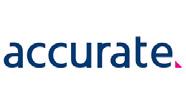

THANK YOU
LEARN MORE
PARTNER WITH US
13 Targeted Publications to Reach Your Audience


Informing, Educating, Enlightening and Assisting HR professionals in their personal and professional development, the Excellence series offers high-quality content through the publications!



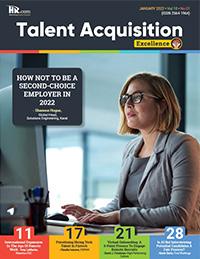

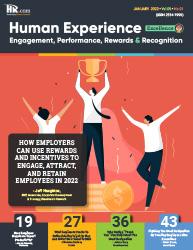
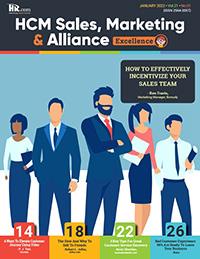


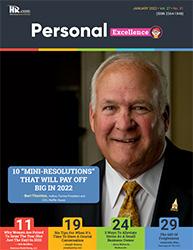
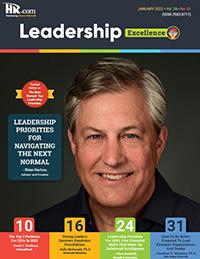
Like to submit an article? Use our online submission form or for more information go to www.hr.com/ExcellencePublications Publications

For more information: Phone: 1.877.472.6648 | Email: ePubeditors@hr.com | www.HR.com/epubs HCM Excellence (APAC & Middle East) September 2022
